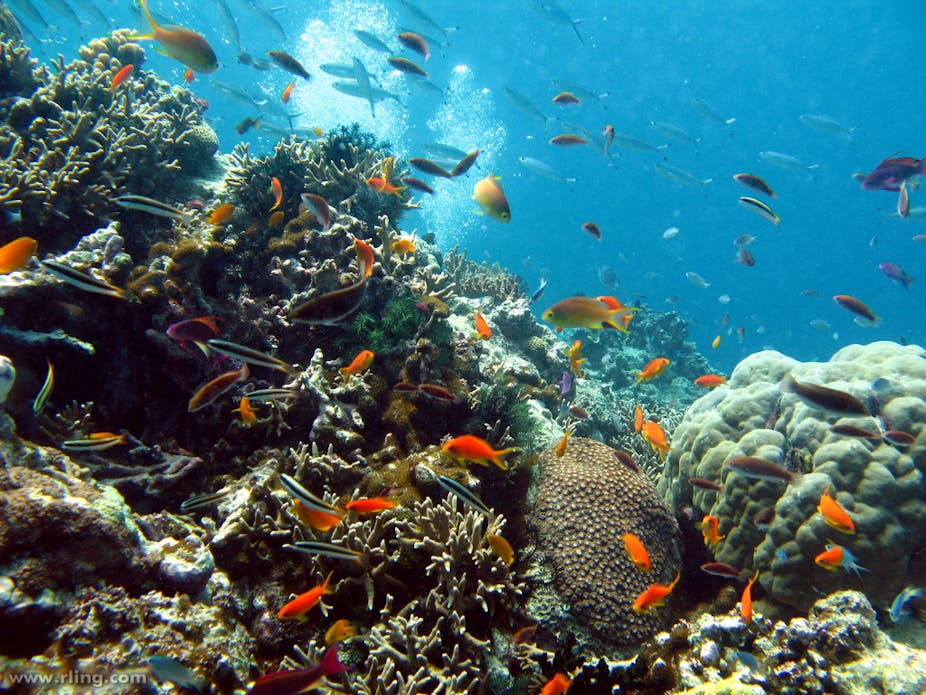The Great Barrier Reef – one of the seven natural wonders of the world – has been a subject of ongoing concern, after a damning report from UNESCO in 2012 flagged up significant risks to the reef from coastal development, poor water quality and climate change.
Since then, protecting the reef has been a priority for campaign groups, voters, and the Australian government, as efforts were made to avoid the area being listed as “in danger” by the World Heritage Committee. This classification is reserved for sites under imminent and potential threat from war, natural disasters and pollution, and would have been a source of embarrassment for the Australian government.
A decision reached
Now, UNESCO has issued a draft decision, recommending that the committee should not list the reef as “in danger”. The decision was taken in light of a number of commitments made by the Australian government, aimed at protecting and conserving the reef for years to come.
Callum Roberts, a marine conservation biologist at the University of York, thinks UNESCO has reached the right decision.
“This recommendation represents the very significant strides made toward improving the conservation and protection of the Great Barrier Reef,” Roberts said. “UNESCO has set some clear milestones to check that the commitments are being implemented.”
“For instance, the draft recognises that sufficient investment is essential, so it wants an update by the end of 2016 on the progress made to implement the plan, and another in 2019 demonstrating the impact that the measures are having on the reef. It has not ruled out listing the reef as ‘in danger’ in the future, and UNESCO is right to hold the Australian government to the commitments that it has made.”
Roberts explained that many concessions have been won from the Australian government by groups campaigning to protect the reef. Not only has has the government promised to restrict new developments to within existing sites – rather than encroaching on untouched areas of the reef – it will also refrain from dumping the silts and sediments dredged from around the Abbot Point coal port onto the reef.
“Initially, the waste was going to be dumped on the Caley Valley Wetland instead,” Roberts explained, “this would have been a huge shame; when I visited the wetland in 2013 it was replete with birds and other wildlife. But campaigners have since made the government agree to dump the waste beside the wetland. Although this is still not ideal, it is a step in the right direction.”

The government has also committed to reduce run-off pollution by 80% before 2025. “When crops are fertilised and irrigated, the nutrient-enriched water flows out onto the reef, and increases the survival of the larvae of the crown-of-thorns starfish,” Roberts explains. “This has caused large outbreaks of starfish – which are predators of coral – on the reef, as well as an overgrowth of seaweed. We need to get the nutrient-levels down to protect the reef from these threats.”
Other commitments include an initial investment of AU$200 million (US$153 million) to accelerate progress on plans to reduce pollution, and the draft goes on to call for the government to establish the proposed investment framework as “a matter of priority”. It warns that the government “should provide a convincing demonstration that the necessary investment to achieve the plan is being made and will be sustained” and that “sustained, adequate financing is central to the plan’s performance”.
Big reef, big deal
As well as being a site of global environmental importance due to its size – it’s larger than the UK and Ireland combined – and its biodiversity, the reef has also become an important topic politically.
Roberts notes the Labor party’s commitment to the reef in the lead up to Queensland’s state election played an important role in the party’s stunning victory at the polls. “The ‘Fight for the Reef’ campaign – organised by the Australian Marine Conservation Society and the WWF – has also played an important role in raising the reef up the political agenda and getting public support in place,” Roberts said.
The decision will come as a welcome relief to Australians for economic reasons, too: the “in danger” listing could have affected reef tourism, which is estimated to bring in AU$6.4 billion a year in direct spending, and employs more than 64,000 people.
“If the reef had been listed as 'in danger’, Australia would have been shaken up by the criticism that followed from the international community,” agreed Robert Lambert, Assistant Professor in Environmental History at Nottingham University, and an expert in environmental tourism.

“As it stands, I think Australia has woken up over the past three years to the significance of the reef in a global context, and taken measures to protect it accordingly.” Lambert argued that the reef holds special significance for people all over the world: “most people are aware that the Great Wall of China and the Great Barrier Reef are the biggest man-made and natural constructions visible from space.”
Lambert emphasised the importance of sharing the reef with present and future generations: “the tourism industry has to tread a delicate path between protecting this international heritage area, and developing the necessary provisions for guests.”
Although the Australian government has been given a reprieve, it will need to begin fulfilling its long term sustainability plan – Reef 2050. The government’s final commitment is to be guided by the evidence from the Great Barrier Reef Outlook Report, which is conducted every five years by the Great Barrier Reef Marine Parks Authority. If it fails to do so, the reef could still go on to be classed as “in danger” after 2020.

